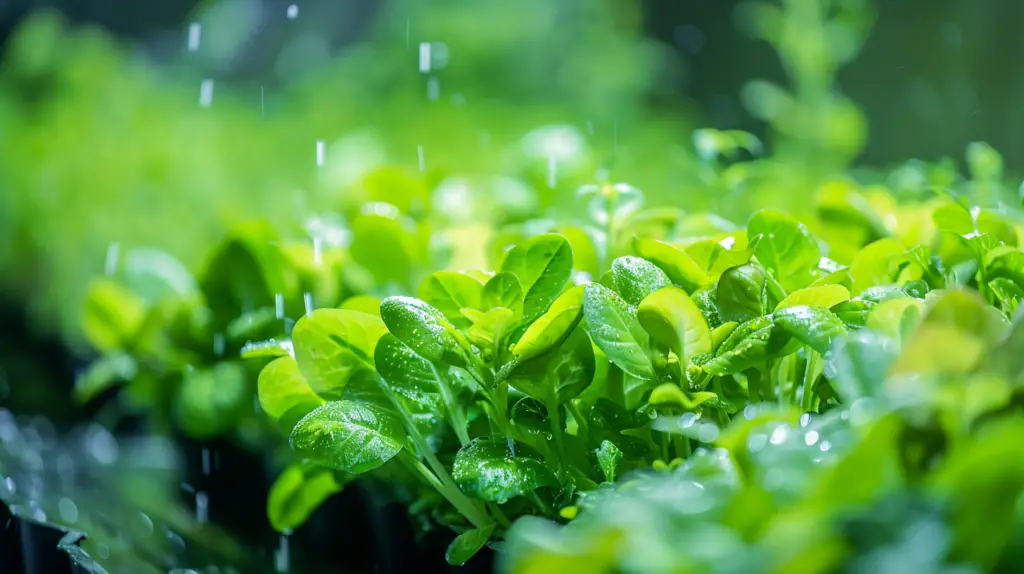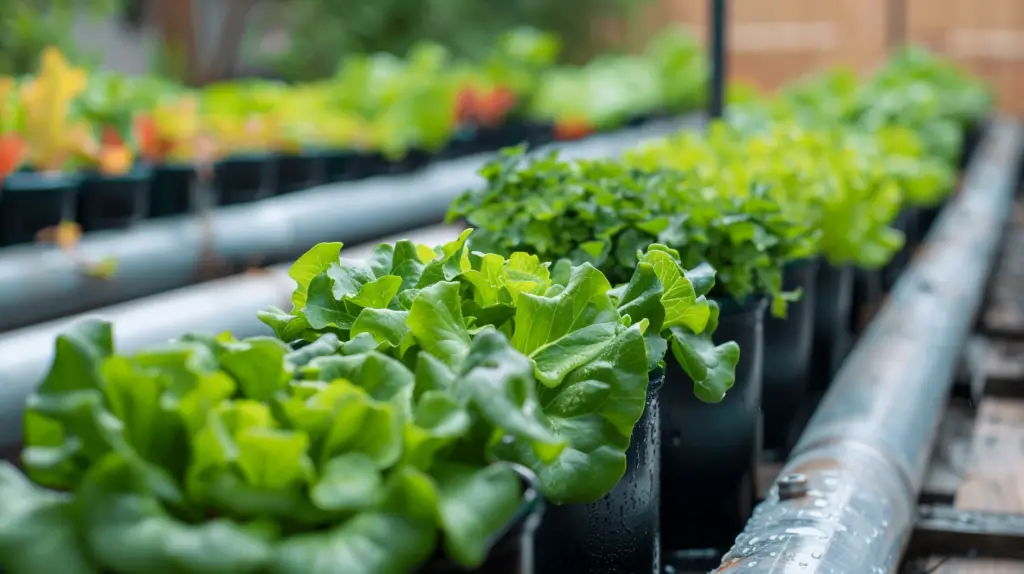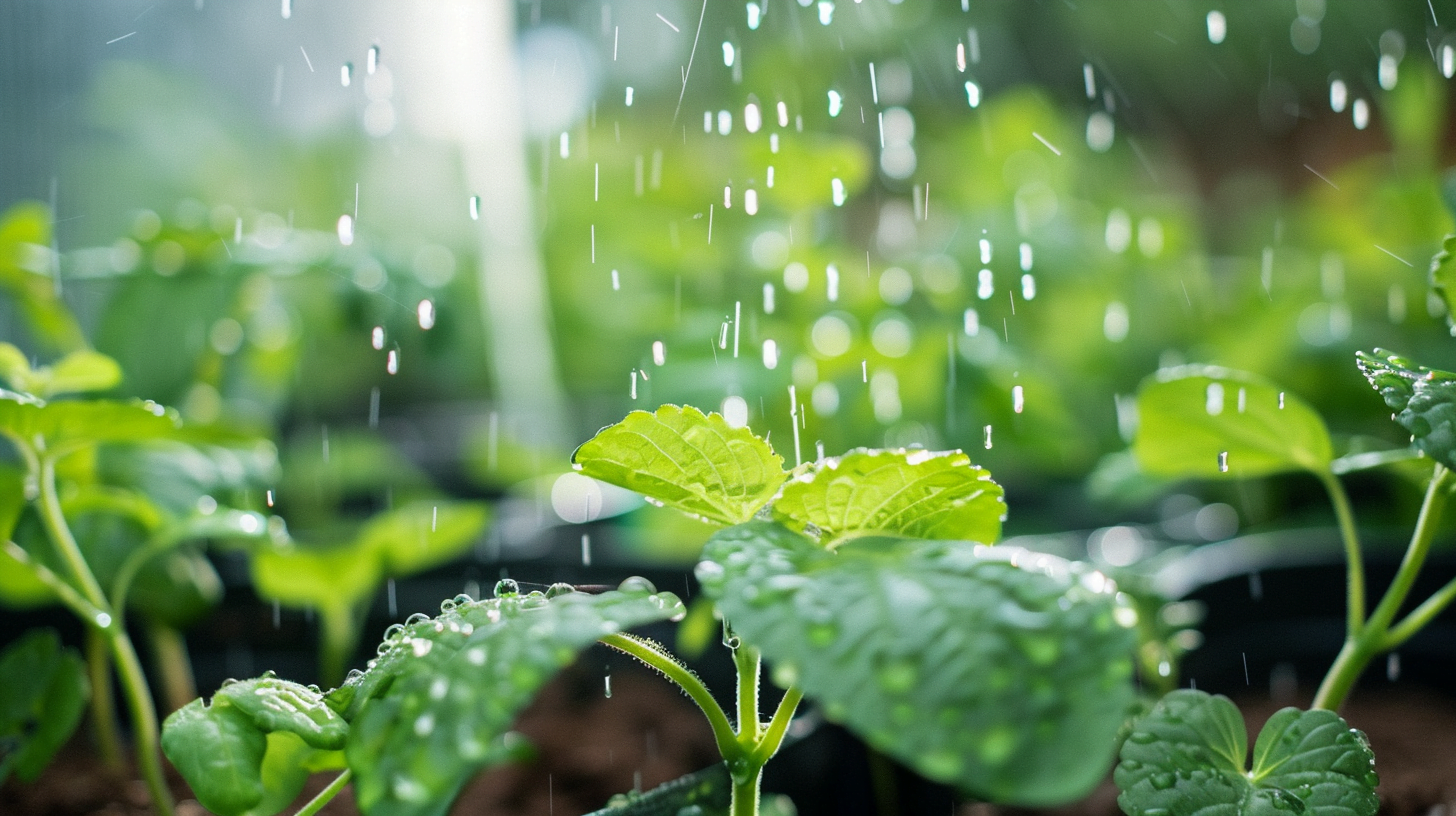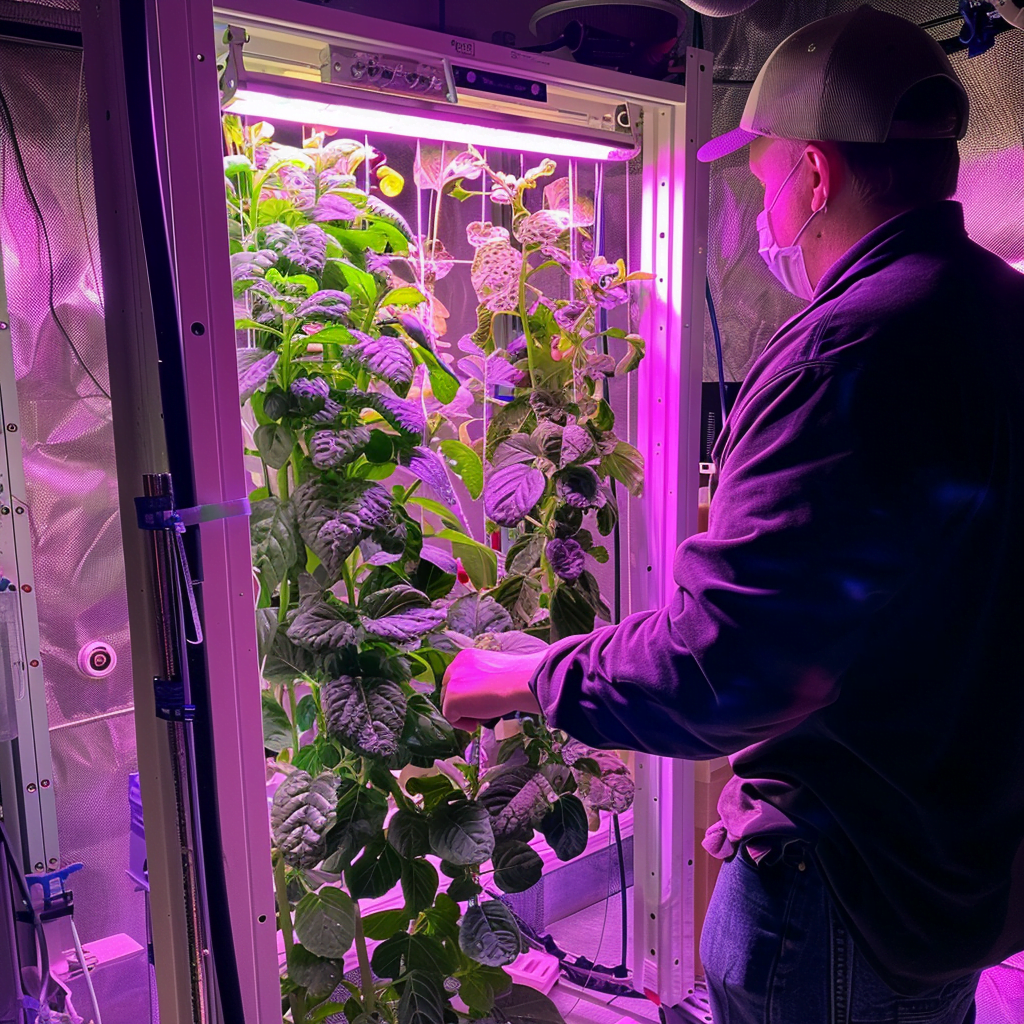Hydroponics is the method of growing plants without soil, using mineral nutrient solutions in water. Using rainwater in hydroponics systems is beneficial as it provides a sustainable and often higher quality water source compared to tap water. This comprehensive article delves into optimal methods for collecting, treating and utilizing rainwater in your hydroponic system for vigorous plant growth. So let´s learn How to Treat and Use Rainwater in Hydroponics.
Why Use Rainwater for Hydroponics?
Implementing a rainwater harvesting system for your hydroponic garden has multiple advantages:
Sustainable Water Source
Tapping into rain runoff reduces reliance on municipal tap water for your hydroponic system, promoting self-sufficient and eco-friendly gardening. Setting up a rainwater collector can meet a substantial portion or all watering needs after the initial investment. This conserves groundwater resources and saves money over time.
Low in Chlorine and Fluoride
Tap water contains chemical additives like chlorine and fluoride meant to disinfect for human consumption. However, these can negatively impact plants. Rainwater provides a natural, additive-free source of water.
Soft Water
Rainwater lacks the minerals and salts dissolved in hard tap water, giving it very low mineral content. The soft nature of collected rainwater enables hydroponic nutrient solutions to dissolve and absorb more effectively for better plant uptake.
Nutrient Benefits
In addition to hydrogen and oxygen, rainwater absorbs small amounts of atmospheric nitrogen and carbon dioxide. Absorbed Nitrogen can be utilized directly by plants for growth. The carbonic acid also lowers rainwater pH slightly, beneficial for nutrient availability.
Free Source of Water
A properly designed rainwater harvesting system provides a steady supply of water at no cost beyond the initial investment. Once storage containers and redirection infrastructure are set up, nature provides this high-quality water for free.
Environmental Benefits
Using rainwater for agriculture and horticulture allows more groundwater reserves to remain rather than tapping aquifers and wells. Fossil fuels burnt to deliver municipal water are also conserved. Less runoff and stormwater drainage contamination also occurs when rainfall is captured on site.

Testing and Treating the Collected Rainwater
Before introducing rainwater into your hydroponic system, take proper steps to test its suitability and treat it optimally. Testing is essential as rainwater composition varies based on environmental factors like local air quality and mineral contamination from collection surfaces.
Test pH and Nutrient Levels
Use electronic meters or chemical test kits to determine pH, nitrogen forms (nitrate/ammonium), phosphorus, potassium and other macro and micronutrients. Compare values to the optimal ranges suited for your specific hydroponic method.
Adjust Mineral Composition
Based on test measurements, use concentrated hydroponic nutrient solutions to adjust rainwater to target levels for robust plant growth. For example, phosphoric acid can lower high pH levels. Calcium nitrate and potassium sulfate mixes provide supplemental N-P-K.
Remove Debris
Install screen filters, sedimentation pots and debris traps in your collection system to filter leaves, grit and other solid matter from rooftop or surface runoff. Slow sand filtration beds also clarify debris effectively.
Sterilize
Eliminate bacteria like Pseudomonas, fungi and other microbes by sterilizing harvested rainwater using UV irradiation, ozone treatment, hydrogen peroxide dilution or other methods. Slow sand filtration also significantly reduces microbes.
| Parameter | Optimal Range | Potential Deficiency/Toxicity |
|---|---|---|
| pH | 5.5-6.5 | Nutrient imbalances if too high/low |
| Nitrogen | 12-15 ppm | Slow growth if too low |
| Phosphorus | 3-5 ppm | Stunted plants if too low |
| Potassium | 6-10 ppm | Susceptibility if too low |
| Calcium | 140-200 ppm | Poor fruiting if too low |
| Magnesium | 30-75 ppm | Yellowing leaves if too low |
Target rainwater nutrient ranges for hydroponic systems.
This treatment process ensures collected rainwater is optimized for nourishing your hydroponic plants.
Rainwater Collection Methods
Several techniques can harvest rainwater falling on buildings, greenhouses or other structures:
Rain Barrels
Rain barrels are a simple, low-cost option. These 50-300 gallon containers attach to building gutters and downspouts, collecting roof runoff. Ensure barrels have sealed lids, screens/filters, and valves for hose attachments. Elevate barrels to enable gravity flow.
Tanks and Cisterns
For large scale rainwater storage, polyethylene, fiberglass, concrete and metal tanks have 500+ gallon capacity. Tanks sit above or below ground. Underground cisterns prevent algae growth but require pumps for distribution. Match tank size to water demands.
Ponds/Reservoirs
Lined ponds or reservoirs allow for immense rainwater storage volumes. Ponds require space and pumps but meet very high water quantity needs. Incorporate overflow drainage and treatment to handle heavy rainfall.
When selecting a collection method, consider available space, local rainfall patterns, budget and needed capacity. Redirect downspouts and incorporate first flush diverters, screens, lids and debris traps to maximize clean catchment.

Using the Treated Rainwater in Your Hydroponic System
Many kinds of hydroponic systems can utilize harvested rainwater:
Media Bed
Plants grow in inert media like perlite, gravel or clay pellets. Rainwater flows through, transporting nutrients to root zones before recycling back to storage. Excellent oxygenation occurs.
Deep Water Culture
Plant roots dangle directly into an aerated rainwater reservoir rich in nutrients. Air pumps oxygenate the water while pH and nutrients are actively managed.
Nutrient Film Technique (NFT)
A shallow stream of rainwater containing all essential nutrients continuously flows through sloped PVC piping or gutters. Plant roots dangle into the moving stream.
Aeroponics
Plant roots hang suspended in air while specialized nozzles mist them with a fine rainwater nutrient spray. Very high oxygenation of roots occurs.
Flood and Drain
A grow tray filled with clay pellets floods with nutrient rich rainwater then drains out on a timed cycle. This exposes roots to cycles of water, nutrients and air.
The quantity of water utilized depends on system size, temperature, humidity and growth stages. Continually monitor rainwater pH/nutrients with electronic meters and titration kits. Use pumps, timers and distribution methods suited for your system’s scale.
Maintaining Water Quality Long-Term
Several best practices manage rainwater quality over months/years:
Secondary Filtration/Sterilization
Installing supplementary sediment filters, slow sand beds, nanofiltration membranes or UV units after storage containers clarifies and disinfects water before final use.
Test and Adjust Nutrients
Actively monitor and test rainwater nutrient levels monthly or more frequently. Use concentrated hydroponic fertilizers to amend and stabilize nutrients.
Ensure Aeration
Prevent stagnation and low oxygen with fountain pumps, air bubblers or ventilation piping in covered tanks. Circulate water if inactive for long periods.
Clean Storage Containers
Inspect storage tanks, cisterns and barrels yearly. Remove sediment, clean sides and replace filter media to prevent contamination and algae.
Following these guidelines prevents degraded rainwater quality for optimal hydroponic use over the long term.
Setting Up Your Own Rainwater Harvesting System
Calculate Water Needs
- Daily usage – Gallons needed for irrigation daily/weekly
- Local rainfall – Average annual inches/centimeters
- Collection potential – Footprint of catchment area, first flush diversion
Select Appropriate Storage Method
- Small system – Rain barrels
- Large system – Poly tanks, concrete cisterns
- Very large system – Ponds, lined reservoirs
Set Up Catchment Infrastructure
- Gutters, downspouts – Redirect to storage containers
- First flush diverters – Catch initial dusty water
- Screens, filters – Keep out debris
- Pumps, valves – Automate flow
Treat and Monitor Water Quality
- Debris traps, slow sand filters – Remove particles
- Sterilization – UV, hydrogen peroxide, ozone
- Routine testing – pH, nutrients, bacteria
Following these steps allows you to leverage free rainwater for your soilless gardening!
Conclusion
Collecting and preparing rainwater enables self-sufficient, sustainable hydroponic cultivation. Rainwater provides an ultra-pure, mineral-rich water source ideal for healthy plant development once treated. Test and adjust composition to suit your specific system. Use proper catchment infrastructure and storage to meet demands. Maintain quality with testing and secondary filtration. Implementing rainwater harvesting transforms free environmental precipitation into an optimal hydroponic input.

